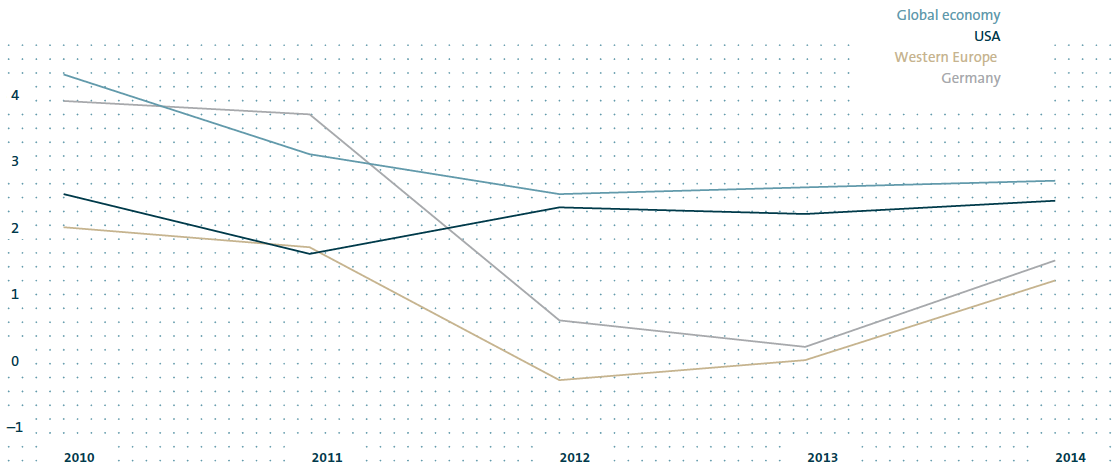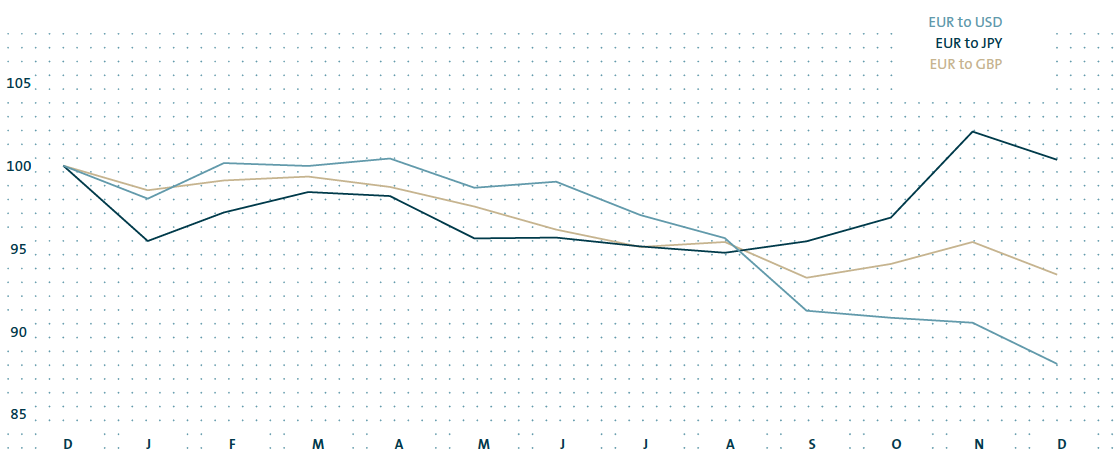Business Development
In fiscal year 2014, the global economy recorded moderate growth that just slightly exceeded the prior-year level. Global demand for vehicles continued to rise. Amid still difficult market conditions, the Volkswagen Group delivered more than 10 million vehicles to its customers for the first time.
MODERATE GLOBAL ECONOMIC GROWTH
In fiscal year 2014, global economic growth increased slightly to 2.7% (2.6%). The economic situation in many industrialized nations improved despite the continued presence of structural obstacles. Inflation remained moderate despite the expansionary monetary policies of many central banks. Economic growth in a number of emerging economies was held in check by currency fluctuations and structural deficits. In addition, the falling oil price had a negative impact on the economy in the oil producing countries.
Europe/Other markets
In Western Europe, gross domestic product (GDP) recovered compared with the previous year, growing 1.2% (0.0%). Most northern European countries returned to a moderate growth path, while there were signs that the recession is coming to an end in most of the crisis-hit southern European countries. The unemployment rate in Europe declined slightly to 12.1% (12.5%). However, unemployment in Greece and Spain was well above this average.
In Central and Eastern Europe, GDP growth decreased to an average of 1.6% (2.2%). The economic trend in Central Europe remained positive. In contrast, economic growth in Eastern Europe contracted sharply, largely due to the conflict between Russia and Ukraine and the resulting uncertainty. Russia’s economic output increased only marginally in the reporting period by 0.4% (1.3%).
In South Africa, GDP increased by just 1.5% in 2014, falling short of the comparatively low prior-year level of 2.2%. The country’s economic development was marred by structural deficits and social conflicts.
Germany
Buoyed by positive consumer sentiment and the stable labor market, the German economy saw a slight upturn in 2014, with year-on-year growth of 1.5% (0.2%).
North America
After a moderate start to the year due to the weather conditions, the US economy gained momentum. The easing unemployment rate and positive consumer sentiment stimulated the economy and contributed to growth of 2.4% (2.2%). The US dollar was stronger overall against the euro during the period and appreciated in the second half of the year. Canada’s GDP rose by 2.4% (2.0%). The Mexican economy gathered pace, growing by 2.0% (1.4%).
South America
Brazil was skirting recession during the reporting period; after a 2.5% increase in the previous year, no growth was recorded. Argentina’s economy was held back by structural deficits and the persistent very high rate of inflation, which resulted in a 0.8% decline in economic output (+2.9%).
Asia-Pacific
At 7.4% (7.7%), the Chinese economy continued to record robust growth, with slightly declining momentum. In Japan, GDP growth was held back by tax increases and amounted to 0.2% (1.6%) in 2014. After initial weakness, India’s economic growth was slightly stronger than in the previous year at 5.9% (5.0%). At 4.4% (5.1%), growth in the ASEAN region remained slightly below the prior-year level.

